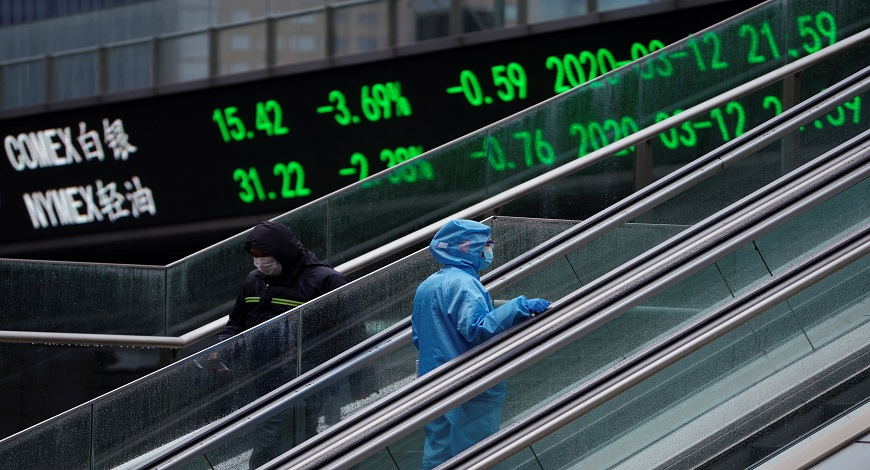Asia shares made hesitant by mixed China data, viral spread

Asian share markets turned mixed on Monday as Chinese retail sales missed expectations and Singapore moved to close schools to fight a coronavirus outbreak, while more evidence of global inflation pressures helped gold to a three-month peak.
Chinese retail sales rose 17.7% in April on a year ago, short of forecasts for a jump of 24.9%, while industrial output matched expectations with a rise of 9.8%.
“Industrial activity remains robust, supported by strong external demand for Chinese goods as vaccinations accelerate in developed countries,” CommSec economist Ryan Felsman said.
“But continuing global supply chain disruptions – including a semiconductor shortage – and surging commodity prices have sapped some momentum as production costs increase.”
The spread of the coronavirus was also a drag with Singapore to shut most schools from Wednesday after reporting the highest number of local infections in months.
Taiwan’s government on Monday had to reassure investors it would stabilise stock and foreign exchange markets if needed amid a spike in COVID-19 cases. Yet, stocks there were still down 3.6%.[EMRG/FRX]
MSCI’s broadest index of Asia-Pacific shares outside Japan dithered either side of flat, just above a four-month trough hit last week.
Chinese blue chips proved more resilient with a gain of 1.8%.
Japan’s Nikkei lost 0.8%, having also touched its lowest since early January last week. Data suggested inflation was a global phenomenon with Japan’s wholesale prices jumping in April as rising energy and commodities costs ate into corporate margins.
S&P 500 futures and Nasdaq futures both eased 0.1%, following Friday’s rally. EUROSTOXX 50 futures added 0.3% while FTSE futures were little changed.
The U.S. data calendar is light this week, putting the focus on minutes of the Federal Reserve’s last policy meeting for any clue when officials there might start to talk about tapering.
So far, most Fed members have been doggedly dovish on policy, arguing a spike in inflation was transitory, though there was a risk it could get baked into expectations.
The University of Michigan consumer survey last week showed the highest expected year-ahead inflation rate as well as the highest long-term inflation rate in the past decade.
BofA’s U.S. economist Michelle Meyer sees outsized price pressures from shortages of goods and rebounds in travel.
“Inventory-to-sales ratios are at historic lows, record numbers of small businesses complain of tight inventories, ports are congested, and shortages of semiconductor chips and new/used cars are driving prices higher,” Meyer says.
“We expect goods inflation to soften by year end as demand levels off and production rebounds, but wages may continue to climb,” she added.
DOLLAR TRACKS MOVE IN YIELDS
The inflation scare initially saw 10-year Treasury yields reach a six-week peak just above 1.70%, but the Fed’s patience soothed the mood and yields were back to 1.62% on Monday.
The dollar pretty much tracked the move in yields, bouncing to 90.909 on a basket of currencies before steadying at its current 90.407.
The euro was last at $1.2130, having climbed 0.5% on Friday as yields eased, while the dollar was steady on the yen at 109.37.
Bitcoin fell a further 7% to its lowest since February after tweets from Elon Musk hinted that Tesla may have sold, or will sell, its holdings.
The dip in the dollar combined with inflation concerns on Monday to lift gold to a three-month top at $1,853 an ounce and cracking tough resistance at $1,845. [GOL/]
Oil prices marked time after see sawing last week as the Colonial Pipeline restarted from a hacker shutdown. [O/R]
Brent dipped 8 cents to $68.63 a barrel, while U.S. crude lost 2 cents to $65.35 per barrel.









